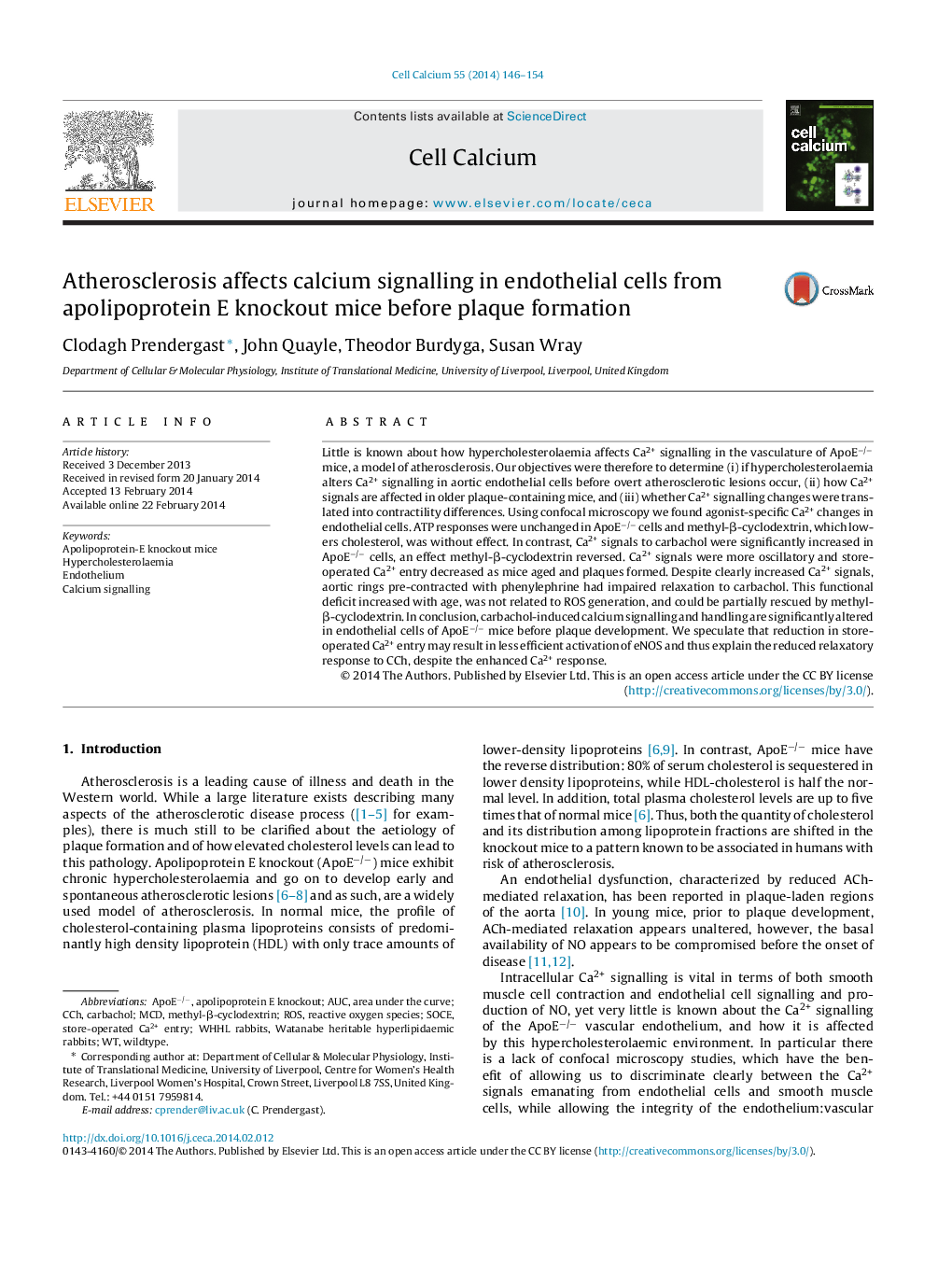| Article ID | Journal | Published Year | Pages | File Type |
|---|---|---|---|---|
| 10926228 | Cell Calcium | 2014 | 9 Pages |
Abstract
Little is known about how hypercholesterolaemia affects Ca2+ signalling in the vasculature of ApoEâ/â mice, a model of atherosclerosis. Our objectives were therefore to determine (i) if hypercholesterolaemia alters Ca2+ signalling in aortic endothelial cells before overt atherosclerotic lesions occur, (ii) how Ca2+ signals are affected in older plaque-containing mice, and (iii) whether Ca2+ signalling changes were translated into contractility differences. Using confocal microscopy we found agonist-specific Ca2+ changes in endothelial cells. ATP responses were unchanged in ApoEâ/â cells and methyl-β-cyclodextrin, which lowers cholesterol, was without effect. In contrast, Ca2+ signals to carbachol were significantly increased in ApoEâ/â cells, an effect methyl-β-cyclodextrin reversed. Ca2+ signals were more oscillatory and store-operated Ca2+ entry decreased as mice aged and plaques formed. Despite clearly increased Ca2+ signals, aortic rings pre-contracted with phenylephrine had impaired relaxation to carbachol. This functional deficit increased with age, was not related to ROS generation, and could be partially rescued by methyl-β-cyclodextrin. In conclusion, carbachol-induced calcium signalling and handling are significantly altered in endothelial cells of ApoEâ/â mice before plaque development. We speculate that reduction in store-operated Ca2+ entry may result in less efficient activation of eNOS and thus explain the reduced relaxatory response to CCh, despite the enhanced Ca2+ response.
Keywords
Related Topics
Life Sciences
Biochemistry, Genetics and Molecular Biology
Cell Biology
Authors
Clodagh Prendergast, John Quayle, Theodor Burdyga, Susan Wray,
